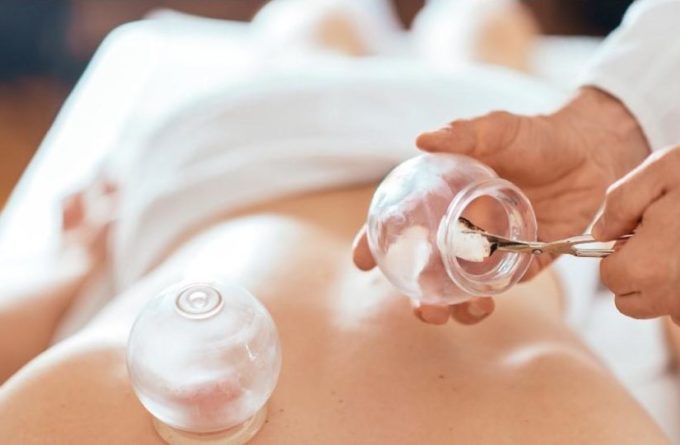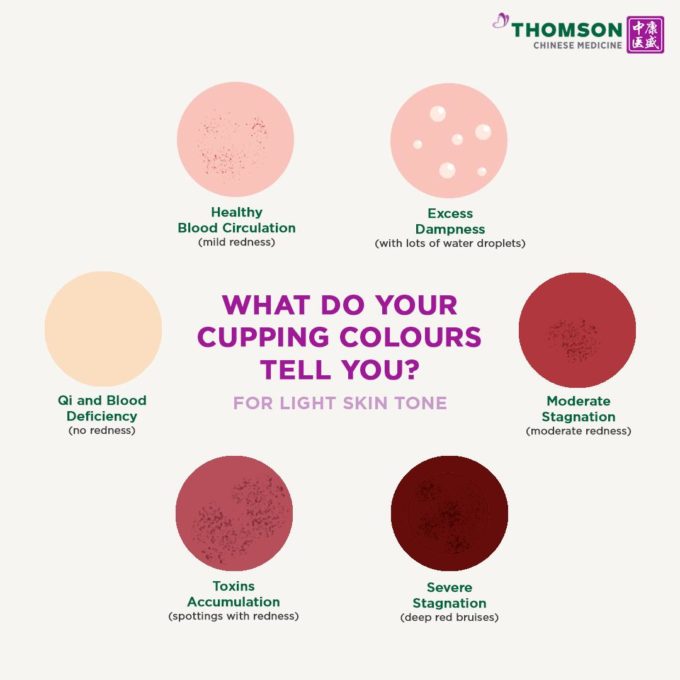What is cupping therapy?
Cupping is a form of Traditional Chinese Medicine (TCM) therapy where inverted glass, plastic, or bamboo cups are applied to the acupuncture points on the body.
This technique has been used for thousands of years and one of the earliest documentations of cupping can be found in the work titled A Handbook of Prescriptions for Emergencies, which was written by a Taoist herbalist Ge Hong all the way back in 300 AD.
Currently, cupping therapy is a well-recognised traditional method used for health promotion, prophylaxis, and treatment for a variety of illnesses.
What are the benefits of cupping?

This old TCM philosophy holds that pain results from the blockage of Qi, blood, or energy. Cupping is therefore a method of clearing this blockage to restore the body’s natural flow of energy and thus alleviating the pain.
Recent researches show that cupping therapy helps to:
- Decrease muscle activity which results in pain reduction
- Help with muscle relaxation by improving microcirculation, promoting cell repair and angiogenesis in tissues
- Promote healing process via increased local tissue metabolism
- Activate the lymphatic system to drain excess fluids and toxins
- Induce comfort and relaxation on a systemic level
- Good for musculoskeletal pain: Chronic lower back pain, neck pain and fibromyalgia
- Good for digestive problems: Bloating, gastric reflux and constipation conditions
- Good for improving recovery: Cough, asthma and common cold
What are the different types of cupping?
At Thomson Chinese Medicine, we use traditional fire cupping with glass cups to do either dry cupping or wet cupping.
Dry cupping (most common)
Cups are placed over several areas to create a vacuum that lifts the soft tissue and creates an upward stretch within the muscle and fascia.
- Stationary cupping – A small cotton fire soaked in alcohol is lit up, inserted into the cup for 1-2 seconds, quickly removed and cups are swiftly placed onto the body. You will feel a slightly tight sensation and a suction around the cupped area. The cups are usually left on the body for about 10 minutes.
- Gliding cupping – Oil is applied onto the body and the cups are pushed gently along meridians of the body for about 10 minutes. This technique can cover a larger area more quickly hence it is used on the back and thigh areas.
Wet cupping
This is a type of bloodletting cupping. Small punctures are made in specific areas of the body using a specialized lancet needling device followed by stationary cupping on the point. This will allow the stagnated blood to come out through the lacerated skin and collect in the cups. This is similar to an Islamic bloodletting technique called “Hijama”, however, we focus more on the acupuncture points along the meridian channels.
Should I go for cupping therapy?
Cupping is suitable for most patients except those who are physically weak and have certain conditions such as:
- Inflamed or sensitive skin
- High fever or convulsions
- Bleed easily (on blood thinners such as warfarin)
- Pregnant women (stomach, lower back, and specific points must be avoided)
What about those cupping marks?
Seen purplish circles on athletes before? Yes, you may get some of those too. But fret not! It is common for cupping to leave distinctive small, circular bruises on the areas where the cups were applied and it is usually painless.
These cupping marks are discoloration of the skin due to broken blood vessels just beneath the skin, much like a bruise. This indicates the level of blood and Qi stagnation, toxin accumulation, or dampness accumulation in your body. The color and pattern of the marks reflect the level of stagnation in that area. The darker the color, the more stagnation present.


When will cupping marks go away?
These harmless marks will slowly fade before disappearing completely after approximately 1 week depending on the skin’s regenerative ability. After regular cupping treatments, you will find that the marks will visibly become lighter and lighter.
- Light pink: Fade within a few minutes to an hour.
- Dark red: Fade between 3 days to a week (up to 2 weeks if it is an old injury)
If you do not wish to have marks on certain areas, please let your TCM physicians know beforehand.
How often can I do cupping? Any side effects of cupping?
It is recommended to do 1-2 times a week. Depending on how dark the marks are, our physicians will advise whether further treatments are required. Most of the time, cupping is safe and does not cause side effects. However, in some rare cases, one may feel dizzy, have sensitive skin around the treatment area or develop small blisters.
Thomson Chinese Medicine is a TCM clinic in Singapore that is a member of the Thomson Medical Group. For pain management treatments, schedule an appointment with us today.
Physician Tham Yoke Mei
Traditional Chinese Medicine
Thomson Chinese Medicine (TCM Novena Specialist Centre) and 1 other
English, Mandarin
Alliance MediNet

